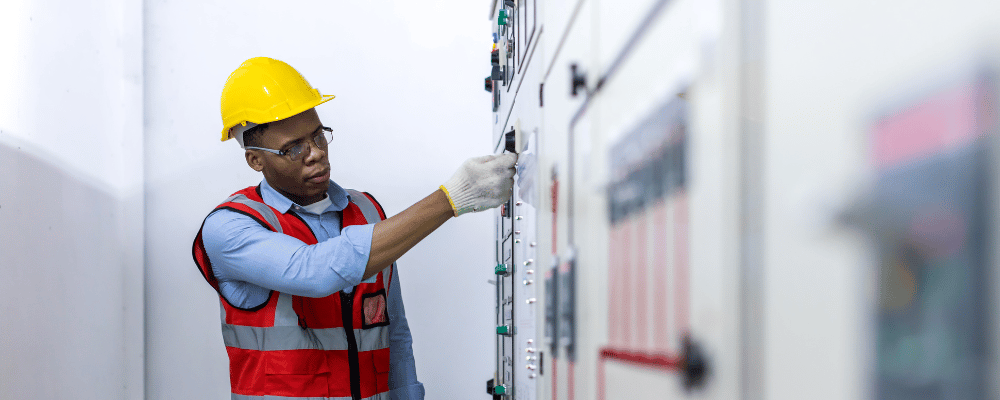With the transition of everything becoming “smart” in the past few years, whether it’s a smartphone, smartwatch, or even a smart car, IoT has become of increased relevance and importance. These “smart” infrastructures are now fixtures of the industrial world in the form of industrial internet of things (IIoT). This article explores the differences between IoT and IIoT, compares IoT vs. SCADA, and reviews common IIoT protocols.
What is IoT?
IoT, or the internet of things, describes the network of physical objects that connect through technology such as sensors, networks, and software. These objects exchange data with one another through the internet and cloud-provisioned storage. IoT has become essential in every aspect of life today, from ordinary household tools to sophisticated industrial machines.
Today, over 30-35 billion devices connect to the internet via IoT. Some examples of these devices you might have in your home include:
Baby monitors
Thermostats
Amazon Alexa
Doorbells
Security systems
Due to modern software production and low-cost manufacturing, the world has discovered ways to connect the physical world to the digital world with minimal human supervision. Tiresome tasks such as turning on the heater or turning off the lights can now be done with a simple click of a button.
What is IIoT?
IIoT, or the Industrial Internet of Things, refers to devices used in manufacturing, retail, healthcare, and other aspects of business. The incorporation of IIoT into everyday business has allowed owners and employees to receive accurate and real-time data, allowing them to better improve everyday processes.
Common applications of IIoT today include:
Smart manufacturing
Connected logistics
Digital supply chains
Business processes have become faster, more digital, and more efficient than ever before. On top of that, machine-to-machine (M2M) communication has allowed for less heavy lifting and stress on humans and more reliability on industrial machines. Companies such as heavy-equipment manufacturer Caterpillar have incorporated IoT sensors in their products to allow them to monitor performance and maintenance from thousands of miles away.
.png)
What's the Difference?
While IoT and IIoT are very similar in many ways, the two have significant differences. The four categories where the most differences occur are security, precision, reliability, and scalability.
Security
The area where IoT and IIoT differ most is security. This is simply due to the different needs and environments each uses. IIoT solutions are commonly produced for high-scale manufacturing and production involving large sums of money. On the other hand, IoT solutions may just involve your kitchen.
As a result, each solution type requires different scales of security measures. IIoT solutions often require complex and robust security measures in order to eliminate possible disasters. Mistakes in the industrial world can lead to losses of millions of dollars and even lost lives. Meanwhile, IoT solutions rarely require sophisticated security considerations as there is typically little risk involved.
Precision
Operations in the industrial world require high precision up to the millisecond. In the world of manufacturing and construction, one tiny measurement can result in a faulty product. This results in many IIoT devices containing high-quality technology, ensuring these standards are met. This includes redundant servers, failsafe shutdowns, and long-lasting battery life. Normal IoT devices do not require high levels of correctness and can therefore suffer in quality.
Safety and Reliability
Industrial work oftentimes requires machines to perform well in harsh environments, such as extreme cold or heat. Industrial standards state machines should last decades prior to major replacement. This affects the design of industrial IIoT products to make them well-suited for the long run. In some cases, these IIoT devices have to live in hazardous areas where a spark could create a tragic incident with loss of lives. Therefore, IIoT devices have be built according to safety standards and oftentimes rated for the hazardous environment where they will live. IoT devices existing indoors do not have to worry about these possible problems and can be created without worry.
Scalability
The scale upon which IoT and IIoT operate is the main source of differences. After all, IIoT products are operating with extremely large budgets and communicate with thousands of other products to produce the best possible outcome. The opposite is true for IoT products, as they are assembled with cost-efficiency and simplicity in mind. This main difference is the origin of all other contrasts between the two solutions. Scalability also refers to the robustness required of the databases and processing systems required to process real-time information and the speed and volume required for some of the industrial applications' demand. Standard databases and processing systems don’t have the capability to handle these demands. Oftentimes, Big Data solutions are a required part of an IIoT solution stack in order to keep up with the volume and speed of data of such environments.

IoT vs. SCADA: Coexisting or Competing?
SCADA, or Supervisory Control and Data Acquisition, is a category of software applications that have been widely used for controlling industrial processes. Similar to IoT, SCADA provides real-time data on industrial processes in order to prevent troubleshooting problems and reduce downtime. However, as IIoT has surged in popularity over the past few years, companies have begun contemplating which system is the better option.
SCADA has accomplished the goal of automating data acquisition in the industrial world for over 50 years. As a result, it is an extremely reliable and accurate system. Although it does not have a wide range of operations, it is exceptional at localized task control. In contrast, the recently surging IoT systems are cloud native. This provides users with greater capabilities and versatility, such as M2M communication.
While the two systems differ in their specifications, they share one common goal: to use software and technology to automate industrial operations. Common thought companies have when searching for new technology is that they must choose between IoT and SCADA. However, this is not the case. IoT is extremely useful for machines communicating with machines and working together to complete a task. SCADA helps collect real-time data about an operation and then communicate this data with humans.
At the end of the day, both systems prove to be extremely helpful in controlling and monitoring modern industrial processes. As a result, many companies have found it beneficial to pair both IIoT and SCADA together in their systems today.
Common IIoT Protocols
IoT and IIoT data protocols are standards for machine-to-machine communication that allow data exchanges to be made between low-power IoT devices. Protocols allow for end-to-end communication without the requirements of an internet connection or central server.
Two of the most common IIoT protocols today are Message Queuing Telemetry Transport (MQTT) and Constrained Application Protocol (CoAP). These protocols are flexible and simple, allowing them to be implemented in all scales of devices, from industrial cranes to TV remotes.
Message Queuing Telemetry Transport (MQTT)
MQTT has become one of the most widely used IoT protocols due to its wide versatility. It's lightweight, requires minimal outside resources for installation, and can be used on the smallest microcontrollers. It has built-in features that allow device-to-device communication through the cloud without relying on unreliable cellular networks. Implementation requires minimal code and power and contains built-in features that allow it to communicate with millions of other IoT devices. It has become the 'staple' for IoT protocols.
Constrained Application Protocol (CoAP)
CoAP is a protocol that allows for HTTP communication in IoT systems. It is ideal for implementation in products such as microcontrollers and sensors with low power outputs. CoAP is extremely reliable in areas with low bandwidth and can continue to work in situations where bandwidth and connectivity are low. Even in these unideal environments, CoAP allows for the export of data successfully. Essentially, it is a client-server protocol where the client orders a request, and the server responds through HTTP.
Conclusion
IoT and IIoT are two of the newest advancements in technology that are helping change the way the world operates. Tasks that required human action in the past can now be done by machines and sensors, thanks to the new solutions provided by IoT and IIoT. They have certain distinct differences, but each successfully accomplishes its task of automating the processes and machinery all around us.
